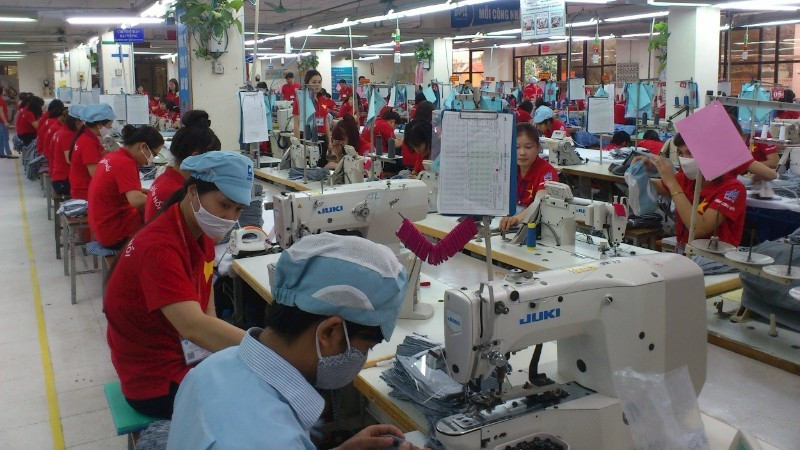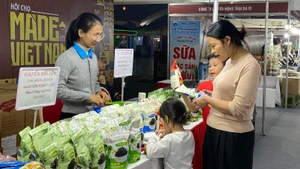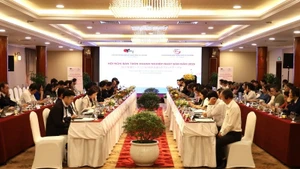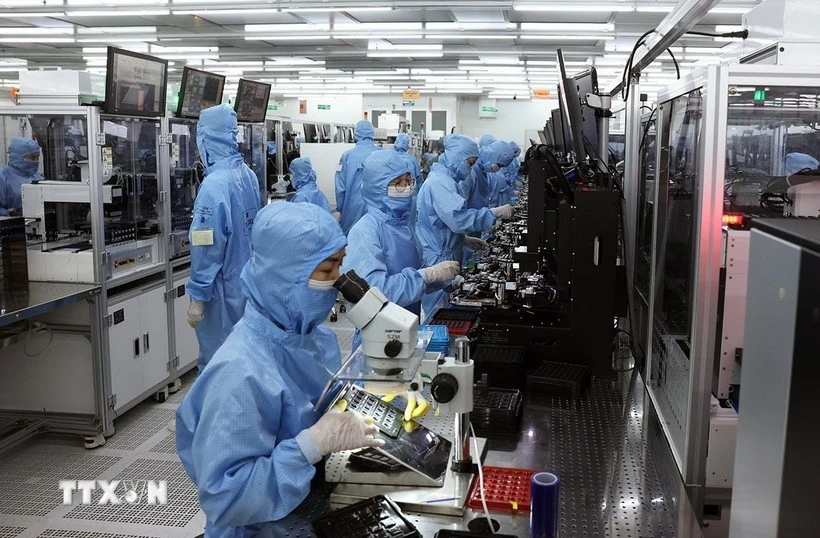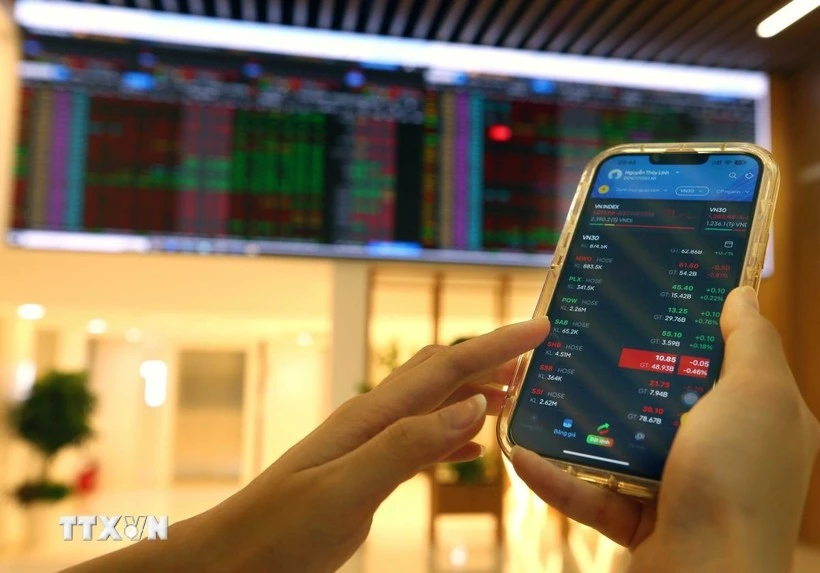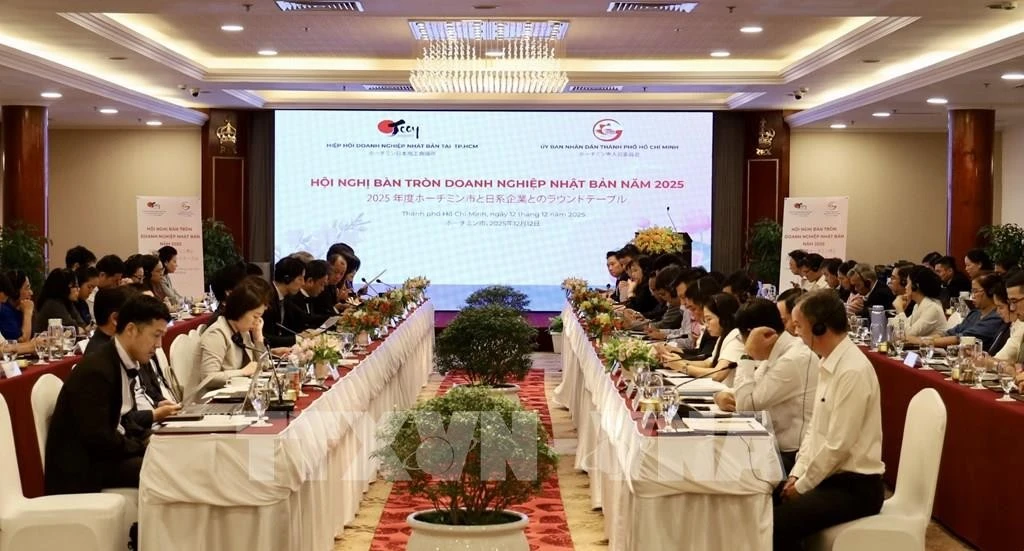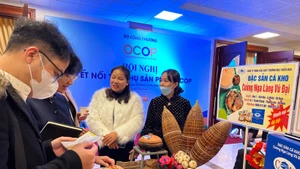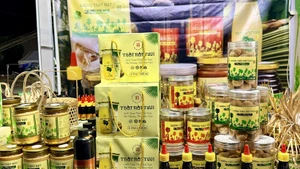At present, textile and garment enterprises have orders until November and are continuing negotiations for subsequent months. In addition to efforts to boost exports and quickly meet the 2025 targets, businesses are also implementing various measures to improve productivity and enhance product value.
Facing market pressures
Nguyen Ngoc Binh, General Director of Hoa Tho Textile and Garment Joint Stock Corporation, stated that amid disadvantageous market fluctuations, the corporation has implemented a series of solutions to stabilise production and boost exports. Thanks to the concerted efforts of the entire system, the company’s revenue over the past nine months reached 4,202 billion VND, equivalent to 83% of the year’s plan, while pre-tax profits reached 329 billion VND, equal to 91% of the annual target.
To achieve its full-year revenue target of over 5,225 billion VND, the company will intensify research and maximise the performance of equipment and labour productivity, while improving production and business efficiency. It will focus on enhancing product and order quality, orienting product sources in line with the production capacity of each factory, and studying the establishment of intelligent and model factories for future development to avoid lagging behind global technological trends.
Nguyen Ngoc Binh said that the cotton, fibre and yarn markets have not shown signs of strong recovery in the remaining months of the year. However, the apparel market is expected to rise slightly in both prices and orders as the peak shopping season for holidays and Tet approaches. In the US market, consumer prices are expected to increase, while purchasing power for garments may decline, leading to slower and fewer orders. In the EU and Japan, demand is likely to fall, with stricter requirements for green products and environmental certifications.
“Not only are orders and prices declining, but labour competition among enterprises is also becoming increasingly fierce, particularly with high-income sectors such as high technology, real estate, and tourism services. Specifically, under the new roadmap, the regional minimum wage increase on January 1, 2026, will impact labour costs. This requires enterprises to proactively improve welfare policies, enhance skills training, and promote automation to stabilise their workforce and sustain production,” emphasised Nguyen Ngoc Binh.
According to Than Duc Viet, General Director of Garment 10 Corporation, in the first nine months of 2025, the company’s revenue reached 104% of the plan, up 14% compared with the same period in 2024. Revenue was mainly from exports, followed by the domestic market and service divisions. Current orders last until the end of November, with some products booked through the end of the year.
Enterprises are also under pressure due to declining orders and lower unit prices, partly influenced by US tax policies and global geopolitical instability.
To achieve the full-year targets of 5 trillion VND in revenue and over 135 billion VND in profit, the company will continue closely monitoring market developments, seeking new sources of orders, reorganising production lines, and prioritising progress and quality amid difficult market conditions. It will also study measures to attract and retain workers. Cao Huu Hieu, General Director of the Viet Nam National Textile and Garment Group (Vinatex), said that after the US reciprocal tax policy came into effect, many enterprises saw orders drop by 20–30% due to a sharp decline in purchasing power in that market.
The coming months are expected to see a continued decrease in textile and garment demand in the US, due to both tax impacts and over-ordering in the first half of the year. This shows that enterprises will face major challenges amid market fluctuations, especially in the US market, which currently accounts for more than 40% of Viet Nam’s total textile and garment export turnover.
Enhancing position in supply chain
Cao Huu Hieu further assessed that during the early months of the year, the impact of US tariffs was not significant as buyers accelerated orders ahead of the effective date. However, the impact on enterprises has now become apparent. With most orders placed monthly, many enterprises currently lack sufficient orders for November, whereas in previous years, they had orders extending through the year end or even the first quarter of the following year. For Vinatex, flexible solutions and close market monitoring have helped achieve positive results.
In the first nine months of 2025, the group’s revenue reached nearly 14,500 billion VND, equal to 79% of the year’s plan and 110% of the same period last year; pre-tax profit reached 1,040 billion VND, completing 114% of the year’s target and doubling compared with 2024.
According to statistics from the Viet Nam Textile and Apparel Association, the country’s total textile and garment export turnover in the first nine months reached nearly 34.8 billion USD, up 7.7% year on year. Of this, garment exports accounted for 27.8 billion USD, with the remainder from fabrics, fibres, yarns, accessories and geotextiles. The surge in year-end consumer demand, especially during festive and holiday seasons, will help the industry soon achieve the 48-billion-USD export target.
Favourable factors, such as Viet Nam’s textile and garment products being present in nearly 140 countries and territories, will help the industry maintain its growth momentum in the coming time. However, the industry still faces many challenges due to heavy dependence on imported raw materials, especially from China.
For instance, the raw materials for the fibre sector rely entirely on imported cotton (100%) and 90–95% imported fibres. Most enterprises are still engaged primarily in processing and have not developed high value-added stages such as design, branding, and distribution due to limitations in financial and human resources.
Moreover, to enjoy preferential treatment under free trade agreements signed by Viet Nam, products must meet specific rules of origin.
One of Viet Nam’s previous advantages in textiles of low-cost labour is gradually diminishing, as large low-processing-value orders shift to countries with cheaper labour costs. To improve competitiveness, enterprises must improve productivity, invest in modern and automated equipment, and reform their production and management models to shift towards high-end, specialised, high-value-added products.
It is necessary to continue diversifying product designs, markets and customers, while actively developing domestic sources of raw materials through the planning and establishment of centralised industrial zones operating under a supply-chain model. It needs to build product development and design centres to strengthen production and improve efficiency, thereby enhancing Viet Nam’s position in the global textile and garment supply chain.
